Scientific happenings, big and small, on this day in history…
But first, today’s quiz:
What event, which took place on this day in 1883, produced the most violent explosion known in human history? You probably know the answer; it’s just a matter of thinking about it for a moment. But just to be sure, you can check the answer at the end of the article.
And on to other historic happenings…
EVENTS
1895
Electricity first transmitted commercially from Niagara Falls
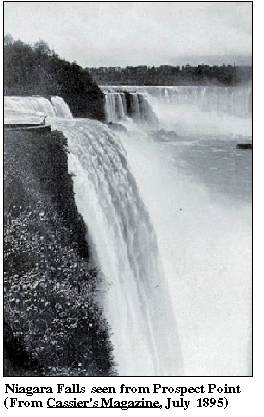
The Niagara Falls are a natural illustration of pure power. And tucked within them is their man-made companions, gargantuan electrical power production facilities (the largest in the world), that harness the prodigious elemental forces.
But five years before start-up of the first large-scale power project at the falls, the method of production and distribution of the power was still undecided. The huge project was to include transmission to Buffalo. Electricity--a novel technology at the time--was only one suggestion. The other methods under consideration were pneumatic, hydraulic, and good old-fashioned mechanical (compressed-air or water mains or steel cables on posts and pulleys the 22-mile distance from Niagara Falls to Buffalo).
The new technology won out in the end. On this day in1895 the Niagara Falls Power Company began generating alternating current (AC) from three 5000-horsepower generators. The next year electricity was successfully transmitted to Buffalo. The Niagara Falls project ushered in the second phase of the Industrial Revolution and shaped and determined the way power would be produced and delivered from then on.
The first use of Niagara Falls Power Company electricity was by the Pittsburgh Reduction Company (later to be renamed Aluminum Company of America), which used an electrolytic process invented by James M. Hall. The company was founded in Pittsburgh in 1886 but transferred operations to Niagara Falls during this period because of the prospect of cheap and reliable electrical power.
The second electrochemical industry in Niagara Falls also transferred from the Pittsburgh area. The Carborundum Company produced the extremely hard silicon carbide compound using a process invented by Edward G. Acheson. Founded in Monongahela, Pennsylvania, in 1891, in that year the company used 135 horsepower of electricity to produce 45 tons of product. Its contract of 1894 with the Niagara Falls Power Company was for 1000 horsepower, with which it increased its output twenty-fold. Within a decade, the Carborundum Company was using 5000 horsepower of electricity.
http://ublib.buffalo.edu/libraries/projects/cases/niagara.htm
1909
Cro-Magnon man skeleton discovered in France
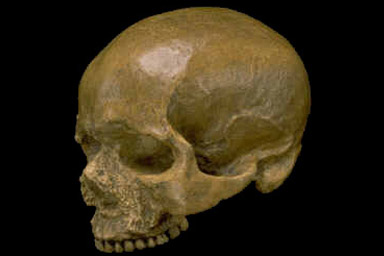
On this date, an almost perfectly preserved Cro-Magnon male skeleton, about 34,000 years old, was discovered by Swiss-German antiquities dealer and historian Otto Hauser. He was a member of a party hunting for fossils in the Combe-Capelle rockshelter, France.
The Cro-Magnons are the earliest known European examples of Homo sapiens, living between 35,000 and 10,000 years ago, whose skeletons were first discovered in March, 1868. They were anatomically identical to tall and muscular modern humans, but slightly more robust on average. Finely crafted stone and bone tools, shell and ivory jewelry, and polychrome paintings found on cave walls all testify to the cultural advancement of Cro-Magnon man.
http://diogenesii.wordpress.com/2008/08/26/august-26-1909-a-thursday/
1939
First televised Major League baseball game
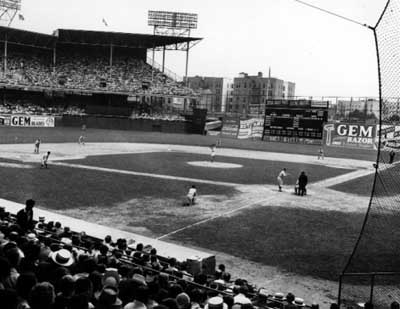
Broadcast on station W2XBS, the station that was to become WNBC-TV, announcer Red Barber called the game between the Cincinnati Reds and the Brooklyn Dodgers at Ebbets Field in Brooklyn, New York.
At the time, television was still in its infancy. Regular programming did not yet exist, and very few people owned television sets--there were only about 400 in the New York area. Not until 1946 did regular network broadcasting catch on in the United States, and only in the mid-1950s did television sets become more common in the American household.
By today's standards, the video coverage was somewhat crude. There were only two stationary camera angles: The first was placed down the third base line to pick up infield throws to first, and the second was placed high above home plate to get an extensive view of the field. It was also difficult to capture fast-moving plays: Swinging bats looked like paper fans, and the ball was all but invisible during pitches and hits.
Nevertheless, the experiment was a success, driving interest in the development of television technology, particularly for sporting events. Though baseball owners were initially concerned that televising baseball would sap actual attendance, they soon warmed to the idea, and the possibilities for revenue generation that came with increased exposure of the game, including the sale of rights to air certain teams or games and television advertising.
http://www.history.com/this-day-in-history.do?action=VideoArticle&id=52773
1957
Soviet Union announces successful test of ICBM
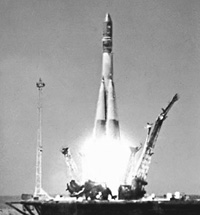
In 1953, the USSR initiated, under the direction of the Ukrainian reactive propulsion engineer Sergey Korolyov, a program to develop an intercontinental ballistic missile (ICBM). Korolyov had constructed the R-1, a copy of the German V2 based on some captured materials, but later developed his own distinct design. This rocket, the R-7, was successfully tested in August 1957.
In the United States, the development of ballistic missile systems was slowed in 1956-1957, when the Eisenhower administration made large cuts in defense spending in an effort to balance the budget. However, on October 4, 1957, the Soviet Union used an ICBM to launch Sputnik, the first man-made satellite. Sputnik's impact was immediate and dramatic. The US missile program was given renewed impetus, restrictions were lifted, previous program priorities were reinstated, and funding was vastly increased.
http://www.fas.org/spp/military/program/smc_hist/SMCHOV8.HTM
2003
Investigators issue final report on the Space Shuttle Columbia disaster
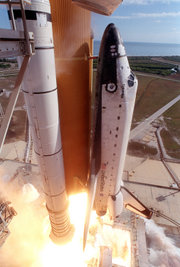
The Space Shuttle Columbia disaster occurred on February 1, 2003, when the Space Shuttle Columbia disintegrated over Texas during re-entry into the Earth's atmosphere. All seven crew members were lost.
The loss of Columbia was a result of damage sustained during launch when a piece of foam insulation the size of a small briefcase broke off the Space Shuttle external tank (the main propellant tank) under the aerodynamic forces of launch. The debris struck the leading edge of the left wing, damaging the Shuttle's thermal protection system (TPS). While Columbia was still in orbit, some engineers suspected damage, but NASA managers limited the investigation on the grounds that little could be done even if problems were found.
On August 26, the Columbia Accident Investigation Board, or CAIB, issued its report on the accident. The report confirmed the immediate cause of the accident was a breach in the leading edge of the left wing, caused by insulating foam shed during launch. However, the report also delved deeply into the underlying organizational and cultural issues that led to the accident. The report was highly critical of NASA's decision-making and risk-assessment processes. It concluded the organizational structure and processes were sufficiently flawed that compromise of safety was expected no matter who was in the key decision-making positions. An example was the position of Shuttle Program Manager, where one individual was responsible for achieving safe, timely launches and acceptable costs, which are often conflicting goals.
The CAIB report found that NASA had accepted deviations from design criteria as normal when they happened on several flights and did not lead to fatal consequences. One of those was the conflict between a design specification stating the thermal protection system was not designed to withstand significant impact damage and the common occurrence of impact damage to it during flight. The board made recommendations for significant changes in processes and culture.
Following the loss of Columbia, the space shuttle program was suspended. Less than a year after the accident, President Bush announced the Vision for Space Exploration, calling for the retirement of the space shuttle fleet following the completion of the International Space Station and the development of the Crew Exploration Vehicle.
NASA planned to return the space shuttle to service around September 2004. That date was pushed back to July 2005. On July 26, 2005, Space Shuttle Discovery cleared the tower, marking NASA's return to space. Overall the flight was highly successful, but a similar piece of foam from a different portion of the tank was shed, although the debris did not strike the Orbiter. Due to this, NASA once again grounded the shuttles until the problem was solved. After delaying their re-entry by two days due to adverse weather conditions, the shuttle safely returned to Earth on August 9, 2005.
The second "Return to Flight" mission, launched on July 4, 2006, after two previous launches were scrubbed because of lingering thunderstorms and high winds. The launch took place despite objections from its chief engineer and safety head. A five-inch crack in the foam insulation of the external tank gave cause for concern; however, the Mission Management Team gave the go for launch. Space Shuttle Discovery touched down successfully on July 17, 2006.
On August 13, 2006, NASA announced during this last launch of the Discovery, more foam had shed than they expected. While this did not delay the launch for the next mission, originally set to lift off on August 27, the weather and other technical glitches did, with a lightning strike, Hurricane Ernesto and a faulty fuel tank sensor combining to delay the launch until September 9. On September 19, landing was delayed an extra day to examine Atlantis after objects were found floating near the shuttle in the same orbit. When no damage was detected, Atlantis landed successfully on September 21.
http://en.wikipedia.org/wiki/Space_Shuttle_Columbia_disaster
BIRTHS
1873
Lee De Forest (Born Aug 26, 1873; died Jun 30, 1961)
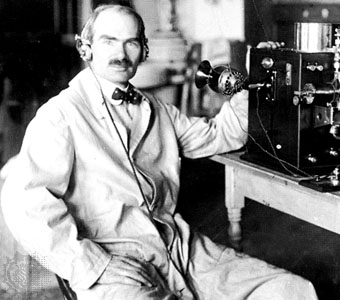
Lee de Forest is most known for his contributions and improvements to the basic invention of all radio and television: the vacuum tube. Earlier Thomas Edison's electric lamp had been modified by the Englishman, Ambrose Fleming, who added a second element, called a plate, and called it the Fleming Valve. By 1906 de Forest had modified Fleming's Valve by adding a grid to control and amplify signals, and called his device the Audion. The Audion was used as a detector of radio signals, an amplifier of audio and an oscillator for transmitting.
The first use of the Audion was as a detector of radio waves. A detector converts radio frequency, RF, into audio frequency, AF, that can be heard using headphones or amplified for a loudspeaker.
Moving to California in 1910, he worked for Federal Telegraph Company at Palo Alto. While there, de Forest finally made his Audion tube perform as an amplifier and sold it to the telephone company as an amplifier of transcontinental wired phone calls. For this innovation he received $50,000.
By 1916, he had perfected his Audion for its most important task, that of an oscillator for the radiotelephone transmitter. By late 1916 de Forest had begun a series of experimental broadcasts in New York City. According to de Forest, "The radio telephone equipment consists of two large Oscillion tubes, used as generators of the high frequency current."
Lee de Forest lived in Hollywood and also worked on a variety of non-radio technical devices, most notable his Phonofilm process, a way to make the movies talk by adding a synchronized optical soundtrack to the film. For that 1920 invention, the first sound-on-film process, he received in 1959 an honorary Oscar from the Academy of Motion Picture Arts and Sciences.
http://www.leedeforest.org/index.html
1906
Albert Bruce Sabin (Born Aug 26, 1906; died Mar 3, 1993)
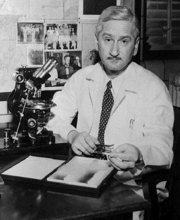
Sabin was a Polish-American physician and microbiologist best known for developing the first oral polio vaccine in 1955. Sabin developed a live-virus vaccine that was first tested in 1954. By that time, however, the killed-virus vaccine developed by Jonas Edward Salk (1914-1995), had already been developed and tested and was commercially available in 1955. The Salk vaccine, which is injected, proved effective in sharply reducing the number of poliomyelitis cases in the US. Sabin, however, persisted in his efforts to develop a vaccine based on a living virus. He postulated that live, attenuated virus, administered orally, would provide immunity over a longer period of time than killed, injected virus.
By 1957 he had isolated strains of each of the three types of polio virus. These strains were not strong enough to produce the disease itself but were capable of stimulating the production of antibodies. He then proceeded to conduct preliminary experiments in the oral administration of these attenuated strains. The vaccine was developed by him and his colleagues at the University of Cincinnati.
Co-operative studies were then conducted with scientists from Mexico, The Netherlands, and the Soviet Union, and finally, in extensive field trials on children, the effectiveness of the new vaccine was conclusively demonstrated. In 1958 and 1959 the vaccine was tested in millions of people in the Soviet Union between and proved successful.
The Sabin oral polio vaccine, commonly administered on a lump of sugar, was approved for use in the United States in 1960 and became the main defence against polio throughout the world. People vaccinated with Sabin's vaccine only infected others with a much weakened version of the disease and this conferred immunity to the unvaccinated population too. It was licensed in 1961 and became the vaccine of choice in most parts of the world.
http://www.whonamedit.com/doctor.cfm/2985.html
DEATHS
1950
Ranson Eli Olds (Born Jun 3, 1864; Died Aug 26, 1950)
Ransom Eli Olds was a pioneer of the American automobile industry, for whom both the Oldsmobile and Reo brands were named. He claimed to have built his first steam car as early as 1894, and his first gasoline powered car in 1896
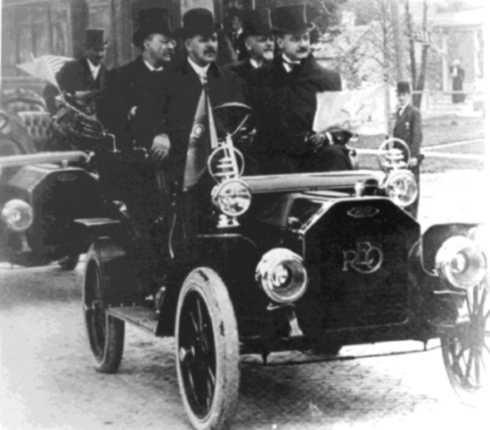
He founded the Olds Motor Vehicle Company in Lansing, Michigan, on August 21, 1897. The company was bought by a copper and lumber magnate named Samuel L. Smith in 1899 and renamed Olds Motor Works. The new company was relocated from Lansing to Detroit. Smith became President while Olds became vice president and general manager.
In 1901 Olds designed the Curved Dash Oldsmobile which sold for $650.00. It was this car, rather than Henry Ford's Model T, that was the first mass-produced, low-priced American motor vehicle. Although the factory was destroyed by fire that year, the company still sold over 600 models of the Curved Dash. Olds created the assembly line in 1901, although most credit Henry Ford, whose contribution was to refine the process and perfect the standardization of components. This new approach to putting together automobiles enabled him to more than quadruple his factory’s output, from 425 cars in 1901 to 2,500 in 1902. In 1904 sales were up to 5000 units.
As Smith's son, Frederick, came into the business, he and Olds clashed frequently until Fred Smith removed Olds from the position of vice president and general manager in 1904 and Olds left his company. He went on to form the R.E. Olds Motor Car Company. Its name was quickly changed to Reo Motor Company to avoid a lawsuit from the Olds Motor Works. The name REO came from the initials of his name as an acronym. Olds served as president (until 1925) and later chairman of REO. It was REO Motor Company that manufactured one of the first ancestors of the pickup truck, a motor truck called the REO Speed Wagon (insert appropriate power-ballad joke here).
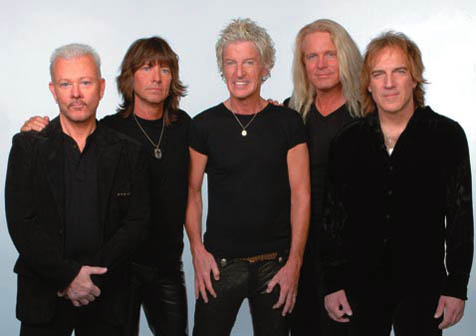
The Olds Motor Works was bought by General Motors in 1908. The Oldsmobile brand, after a production run of 107 years, was discontinued by General Motors in 2004.
.
http://en.wikipedia.org/wiki/Ransom_E._Olds
1974
Charles A. Lindbergh (Born Feb 4, 1902; Died Aug 26, 1974)
Lindbergh, Charles Augustus (1902-1974), an American aviator, made the first solo nonstop flight across the Atlantic Ocean on May 20-21, 1927. Other pilots had crossed the Atlantic before him. But Lindbergh was the first person to do it alone nonstop.
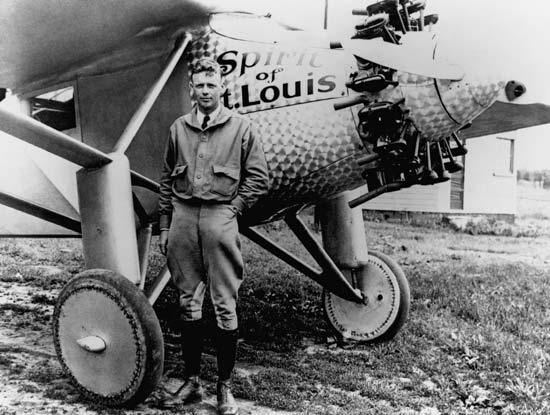
In 1924, Lindbergh enlisted in the United States Army so that he could be trained as an Army Air Service Reserve pilot. In 1925, he graduated from the Army's flight-training school at Brooks and Kelly fields, near San Antonio, as the best pilot in his class. After Lindbergh completed his Army training, the Robertson Aircraft Corporation of St. Louis hired him to fly the mail between St. Louis and Chicago. He gained a reputation as a cautious and capable pilot.
On May 20, Lindbergh took off in the Spirit of St. Louis from Roosevelt Field, near New York City, at 7:52 am, carrying sandwiches and water. He decided against carrying a parachute and radio in favor of more gasoline. He landed at Le Bourget Field, near Paris, on May 21 at 10:21 pm, Paris time (5:21 pm New York time). Thousands of cheering people had gathered to meet him. He had flown more than 3,600 miles (5,790 kilometers) in 33 1/2 hours.
In 1941, he joined the America First Committee, an organization that opposed voluntary American entry into World War II. Lindbergh became a leading spokesman for the committee. He criticized President Franklin D. Roosevelt's foreign policies. He also charged that British, Jewish, and pro-Roosevelt groups were leading America into war. Lindbergh resigned his commission in the Army Air Corps after Roosevelt publicly denounced him. Some Americans accused Lindbergh of being a Nazi sympathizer because he refused to return the medal he had accepted.
After the Japanese attacked Pearl Harbor on Dec. 7, 1941, Lindbergh stopped his noninvolvement activity. He tried to reenlist, but his request was refused. He then served as a technical adviser and test pilot for the Ford Motor Company and United Aircraft Corporation (now United Technologies Corporation).
In April 1944, Lindbergh went to the Pacific war area as an adviser to the United States Army and Navy. Although he was a civilian, he flew about 50 combat missions. Lindbergh also developed cruise control techniques that increased the capabilities of American fighter planes.
Lindbergh died of cancer on Aug. 26, 1974, in his home on the Hawaiian island of Maui. After his death, he was buried on the beautiful grounds of the Palapala Ho'omau Church.
“The life of an aviator seemed to me ideal. It involved skill. It brought adventure. It made use of the latest developments of science. Mechanical engineers were fettered to factories and drafting boards while pilots have the freedom of wind with the expanse of sky. There were times in an aeroplane when it seemed I had escaped mortality to look down on earth like a God.”
– Charles A. Lindbergh, 1927
http://www.charleslindbergh.com/history/index.asp
And the answer to today’s quiz?
The event which took place on this day in 1883, and produced the most violent explosion known in human history: The Eruption of Krakatoa.

Krakatoa has erupted repeatedly throughout recorded history. However its most well known eruption culminated in a series of massive explosions on August 26 - 27, 1883: the most violent volcanic event in modern times. With a Volcanic Explosivity Index of 6, it was equivalent to 200 megatons of TNT - about 13,000 times the yield of the Little Boy bomb (13 to 16 KT) that devastated Hiroshima, Japan.
The 1883 eruption ejected more than 25 cubic kilometers of rock, ash, and pumice, and generated the loudest sound historically reported. The cataclysmic explosion was distinctly heard as far away as Perth in Australia (approximately 1,930 miles away), and the island of Rodrigues near Mauritius (approximately 3,000 miles away). Near Krakatoa, according to official records, 165 villages and towns were destroyed and 132 seriously damaged. At least 36,417 (official toll) people died, and many thousands were injured by the eruption; mostly from the tsunamis that followed the explosion.
In the year following the eruption, average global temperatures fell by as much as 1.2 degrees Celsius. Weather patterns continued to be chaotic for years, and temperatures did not return to normal until 1888. The eruption injected an unusually large amount of sulfur dioxide (SO2) gas high into the stratosphere which was subsequently transported by high-level winds all over the planet. This led to a global increase in sulfurous acid (H2SO3) concentration in high-level cirrus clouds. The resulting increase in cloud reflectivity would reflect more incoming light from the sun than usual, and cool the entire planet until the suspended sulfur fell to the ground as acid precipitation.

The eruption darkened the sky for days afterwards, and produced spectacular sunsets throughout the world for many months. British artist William Ashcroft made thousands of color sketches of the red sunsets half-way around the world from Krakatoa in the years after the eruption.
In 2004, researchers proposed the idea that the blood-red sky shown in Edvard Munch's famous 1893 painting "The Scream" is also an accurate depiction of the sky over Norway after the eruption. Munch said: "suddenly the sky turned blood red ... I stood there shaking with fear and felt an endless scream passing through nature."






Comments